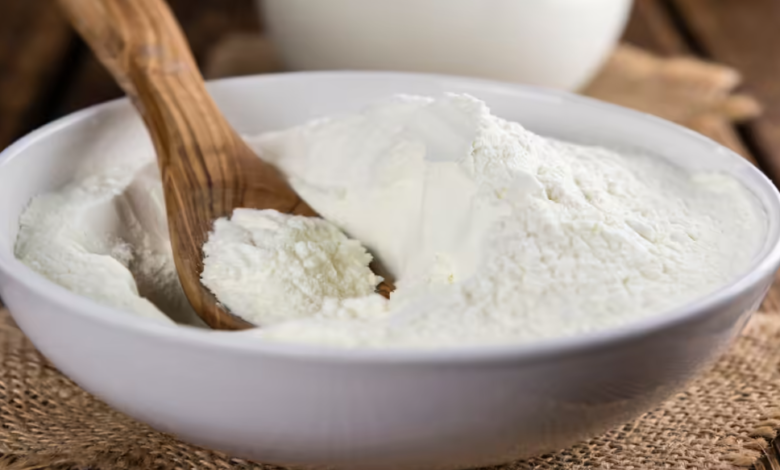The Unseen Value of Milk Powder in the Modern Household

In a world where time is scarce, and convenience is currency, the demand for long-lasting, reliable, and nutritious food items is ever-increasing. Among the many pantry staples that meet these needs, one product often goes unnoticed despite its incredible range of benefits: milk powder.
Once reserved primarily for emergency rations or travel, milk powder has undergone a significant transformation. It now enjoys a solid reputation as a practical and economic alternative to fresh milk, thanks to its long shelf life, ease of use, and surprising versatility in the kitchen and beyond.
A Simple Yet Powerful Concept
milk powder is created through a process of dehydration in which fresh milk is gently heated until all moisture evaporates. What remains is a dry, fine powder that retains most of the nutritional benefits of its liquid counterpart. This process not only allows for easier storage but also reduces the risk of spoilage and waste.
Several types of powdered milk are available on the market, including:
- Whole milk powder: retains all the milk fat, offering a creamy, rich texture.
- Skimmed milk powder: contains little to no fat, ideal for calorie-conscious consumers.
- Instant milk powder: designed to dissolve quickly in water, making it especially convenient for daily use.
- Fortified varieties: enhanced with additional vitamins and minerals for targeted nutritional benefits.
See also: TCM for Dogs: Ancient Wisdom for Modern Pet Health
Advantages That Make a Difference
The growing appeal of milk powder isn’t accidental. It offers a wide array of practical benefits that suit a modern lifestyle:
1. Extended Shelf Life
Unlike fresh milk, which typically lasts only a few days after opening, milk powder can be stored for months or even years when unopened. This makes it ideal for bulk purchases, emergency kits, and long-term storage.
2. Convenience and Portability
Whether you’re a student living in a dorm, a traveler on the road, or a parent preparing school lunches, powdered milk offers unparalleled convenience. Its compact, lightweight form makes it easy to carry and store, especially in areas with limited refrigeration.
3. Cost-Effective Nutrition
Milk powder is often more economical than fresh milk, especially when purchased in bulk. It eliminates the need for frequent grocery store trips and allows users to prepare exactly the amount they need, reducing waste.
4. Nutritional Richness
Many people are surprised to learn that powdered milk retains the vital nutrients found in fresh milk. These include:
- Calcium: Essential for healthy bones and teeth.
- Protein: Crucial for muscle growth and repair.
- Vitamin D: Supports immune function and calcium absorption.
- Vitamin B12: Vital for brain health and red blood cell production.
Diverse Uses in the Kitchen
While milk powder can be reconstituted and consumed just like fresh milk, its real value shines in its many culinary applications:
Baking and Desserts
Powdered milk is frequently used to enrich the texture and taste of baked goods. It enhances browning in breads and pastries and lends a subtle creaminess to cakes and muffins. It can even be added to puddings and custards to increase their nutritional content.
Savory Dishes
In savory cooking, milk powder works wonderfully as a thickener for soups and sauces. It can add depth to mashed potatoes, creamy pasta, or casseroles without the need for heavy cream or butter.
Beverages and Shakes
From hot chocolate to coffee creamer, from protein smoothies to milk teas, powdered milk is an efficient, non-perishable base for countless drinks. Its flexibility makes it a favorite among fitness enthusiasts and busy professionals alike.
Storage and Usage Tips
To get the best results from milk powder, proper storage is essential. Always keep it in an airtight container and store it in a cool, dry place away from direct sunlight or moisture. Once opened, it’s advisable to consume it within 1–2 months for maximum freshness.
When mixing milk powder with water, use warm water for better solubility. Stir gradually and avoid clumping by first creating a paste before adding the full amount of water. The standard ratio is typically one part powder to four parts water, but this can be adjusted based on taste and intended use.
How to Choose the Best Milk Powder for Your Needs
There are plenty of options on the market, so how do you choose the right one?
- Nutritional content: Check the label for added vitamins and minerals, especially if you’re using it for children or elderly family members.
- Type of milk used: Cow’s milk is most common, but goat’s milk powder is also available for those with sensitivities.
- Fat content: Choose between full-cream and skimmed based on your dietary preferences.
- Origin: Products from countries with strict dairy standards offer more assurance in terms of quality and safety.
- Taste preference: Some powders have a sweeter or richer profile—try different brands to see what suits your palate.
Final Thoughts
Whether you’re a busy parent, a college student, a home cook, or simply someone who values practicality and nutrition, milk powder offers a simple yet powerful solution to modern-day food needs. With its impressive shelf life, low waste, and high versatility, it deserves far more recognition than it often receives.
In times where flexibility is key, milk powder continues to prove that some traditional staples are worth keeping close at hand—not just as a backup, but as a reliable daily companion in the kitchen and beyond.



